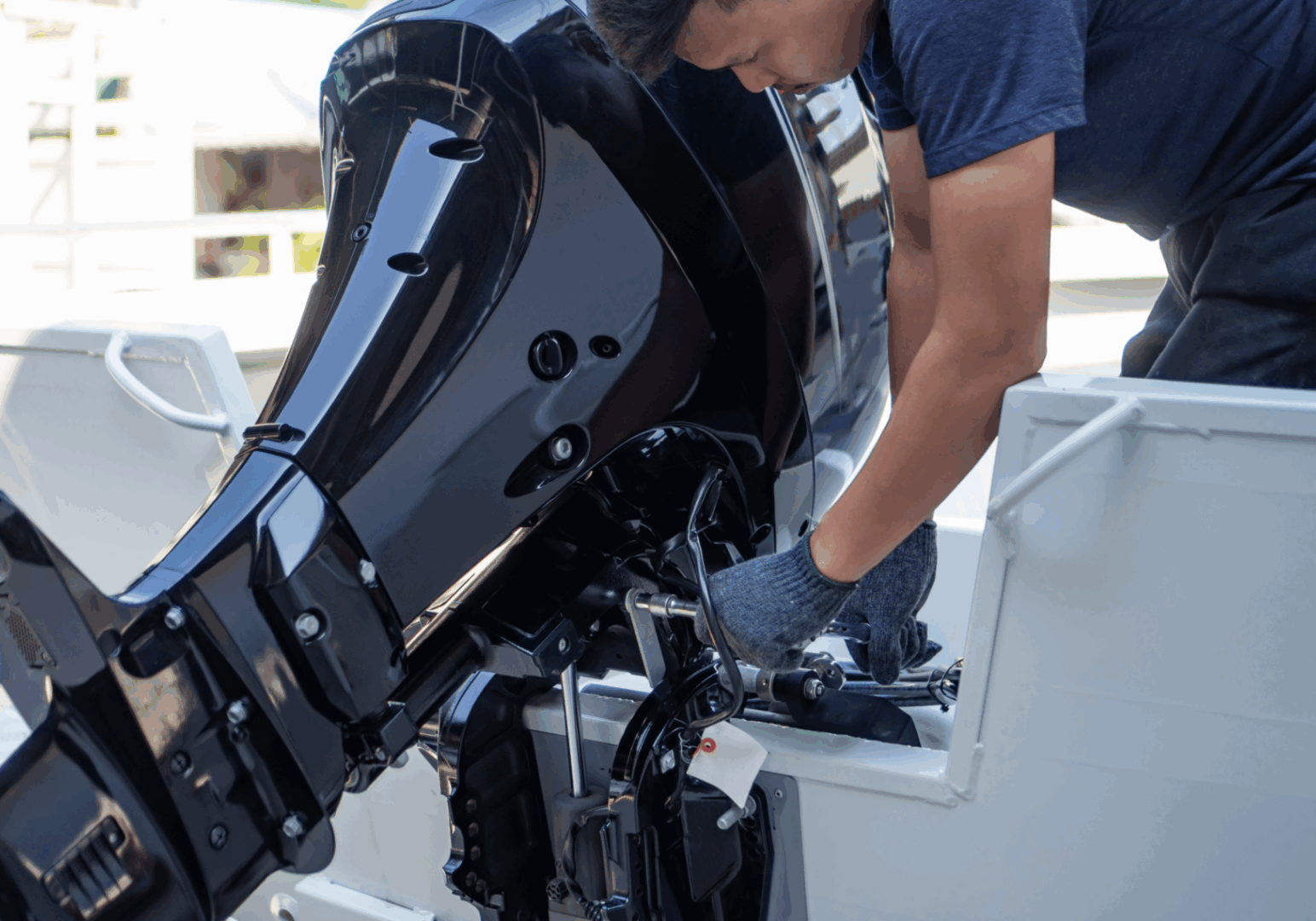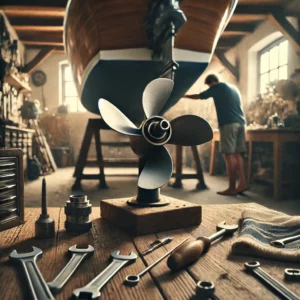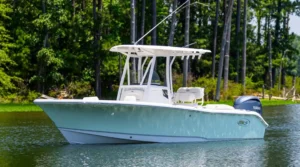Spring Boating Prep: Your Complete Checklist for 2025

Spring is calling, and the water’s waiting. After months of winter storage, your boat’s ready to shake off the cobwebs and dive into the 2025 season—but only if you prep it right. A little effort now can mean the difference between a flawless first trip and a frustrating breakdown. Whether you’re chasing fish, cruising with family, or just soaking in the sun, this ultimate checklist has you covered. From hull to engine, safety gear to launch day, we’ll walk you through every step to ensure your boat’s as eager as you are. No shortcuts, no fluff—just practical tips to kick off spring boating with confidence. Ready to make 2025 your best season yet? Let’s get started.
Pre-Launch Essentials
Before your boat touches the water, a few critical checks can set you up for a smooth spring season in 2025. These pre-launch essentials cover paperwork, safety, and towing—tasks that are easy to overlook but tough to fix mid-trip. Here’s what to do first:
- Check Registration & Documentation
Confirm your boat’s registration is up to date—many states require renewals by early spring, like March 31 in places like California or Virginia. Visit your local DMV or boating agency’s website to renew if needed, and double-check your insurance hasn’t expired. Keep waterproof copies of both onboard; a ziplock bag works fine. If you’re stopped by authorities, having these handy avoids delays or fines. - Inspect Safety Gear
Winter can degrade your safety essentials, so dig them out. Check life jackets for rips or worn straps—U.S. Coast Guard rules mandate one per person, plus a throwable device (like a ring buoy) for boats over 16 feet. Test flares for expiration (usually 42 months from manufacture) and replace duds. Sound your horn or whistle—it’s required for signaling—and ensure your fire extinguisher’s gauge shows green. Store everything where you can grab it fast, not stashed under clutter. - Trailer Prep
If you tow, your trailer needs attention. Roll it out and check tires for cracks or low pressure (match the sidewall PSI rating). Grease wheel bearings with a jack and marine-grade grease—dry ones can lock up on the road. Plug in the lights: test brakes, signals, and running lights, swapping bulbs if they’re dim. Inspect the hitch and safety chains for rust or wear, then do a short test tow to catch any wobbles. A solid trailer keeps your boat safe from driveway to ramp.
These basics aren’t glamorous, but they’re the foundation of a worry-free launch. Get them done, and you’re ready to roll into spring boating without a hitch.
Hull and Deck Maintenance
Spring’s the time to bring your boat’s exterior back to life after winter’s toll. Hull and deck maintenance isn’t just about looks—it’s about spotting damage and ensuring your vessel’s ready for the 2025 season. Here’s how to get it done:
- Clean the Hull
Start with a good scrub. Hose off dirt, salt and other minerals that may have accumulated on the hull, then use a marine cleaner and a soft brush to tackle algae, barnacles and any remaining dirt and debris. Check for cracks, blisters, or chipped gelcoat while you’re at it; small nicks can grow into big repairs if ignored. If you’ve got stubborn stains, a cleaner like Starke Venom Water Spot & Stain Remover can help get your boat looking like new. Rinse thoroughly to avoid streaks. - Wax and Polish
Once it’s clean, protect that hull. Apply a marine wax with a microfiber cloth—work in small sections to keep it even. This shields against UV rays and saltwater corrosion, keeping your boat looking sharp all season. For extra shine, a quick polish with a buffer pad can smooth out minor scratches. Don’t skip this; a bare hull fades fast in spring sun. - Deck Check
Move topside and clear the deck. Sweep away leaves or debris, then wash with a mild soap and water mix—avoid harsh detergents like Dawn that strip sealants. Inspect drains and scuppers; clogged ones can flood your deck in a rainstorm. Test hatches and fittings for tight seals—loose hardware rattles or leaks. If you spot mildew, a vinegar-water scrub works wonders or you can use a simple mildew cleaner like Starke Mildew Clean. Dry everything with a chamois to prevent water spots.
A clean, sound hull and deck mean fewer surprises on the water. Take an hour or two now, and you’ll cruise into spring with a boat that’s as ready as you are.
Engine and Mechanical Systems
Your boat’s engine and mechanicals need a thorough check and testing after winter’s downtime. Spring prep here keeps breakdowns at bay and ensures smooth sailing. Here’s what to tackle:
De-Winterize the Engine
If you winterized, it’s time to undo it. Drain antifreeze from the cooling system—check your manual for drain plug spots—and flush with fresh water. Change old oil and filters; last season’s grime can clog things up. Inspect spark plugs for wear—replace if corroded or mis-gapped (a feeler gauge is handy). Run the engine on a hose for a quick test, looking for leaks and listening for rattles. If you do spot or hear any issues, it’s best to get them looked at by a mechanic as soon as possible. Remember, everyone else will be wanting to get their boat serviced around this time too so the sooner you get in to the shop the sooner you’ll be out on the water.
Fuel System
Old fuel turns nasty over winter. Siphon out leftovers—stale gas reeks like varnish and jams lines. Check fuel hoses for cracks or stiffness; replace if they’re iffy. Fill with fresh fuel and a stabilizer to keep it clean through spring. If water’s mixed in (cloudy fuel’s a clue), you either need to siphon it out or take it to a mechanic to get it flushed out. If all seems fine, run the engine for approximately 10 minutes to cycle fuel through the system.
Battery
Winter saps batteries so the best bet is to remove them and scrub corroded terminals with a wire brush and baking soda. Charge it fully with a marine charger—if it dips below 12.6 volts (use a multimeter), get a new one. Once it has been cleaned and charged, secure it tightly back in its place; loose batteries can short out. Test lights and pumps to confirm power’s good.
Interior and Gear Prep
Spring’s the perfect moment to refresh your boat’s interior and gear after months of neglect. This prep keeps your onboard space comfortable and your essentials ready for action. Here’s how to do it:
Ventilate Interior
Stale air and dampness settle in over winter, so open hatches and doors to let fresh air flow. Check cushions and upholstery for mildew—wipe with a vinegar-water mix if you spot any, or use a cleaner like Starke Mildew Clean for tougher patches. Air out cabins or storage areas; a portable fan can speed it up. Inspect seals around windows or hatches—cracked ones let water sneak in later.
Restock Gear
Your gear took a break too, so check it. Pull out fishing tackle—replace rusty hooks or tangled lines. Test your first-aid kit—swap expired bandages or meds (check dates). Toss in fresh batteries for flashlights and a multi-tool if yours went missing. Stow everything in dry bags or bins; loose items roll around underway. If anything’s worn out, hit the store early—spring rush empties shelves fast.
Electronics Test
Winter can zap electronics, so fire them up. Turn on your GPS and VHF—ensure screens light up and signals connect. Test navigation lights and horn; burned-out bulbs or weak batteries need swapping now, not mid-trip. Wipe down screens with a microfiber cloth—smudges hide critical info. If something’s dead, get a pro to check it before launch day.
Final Checks Before Launch
As the first day of boat season approached, these last checks ensure your boat’s ready to hit the water without hiccups.
Run the Engine
Test your engine one more time—hook it to a hose or dip it in water if you’ve got access. Listen for sputters or knocks; look for oil leaks or smoke. Let it idle 5-10 minutes to warm up. If anything feels off, don’t roll the dice—get a mechanic on it quick before spring crowds hit the shops.
Check Bilge Pumps
A working bilge pump saves you from a swampy mess. Pour a bucket of water into the bilge and flip the switch—manual and auto modes should kick on. Clear any debris clogging the intake; a stalled pump’s useless in a storm. Test float switches too—lift them by hand to confirm they trigger.
Weather Plan
Spring weather’s tricky, so peek at the forecast. Check wind speed (over 15 knots can get rough), rain odds, and water temps—cold waves bite early season. Pick a calm day for your first run; save heroics for summer. Apps like The Weather Channel or NOAA Weather keep you posted.
Conclusion
You’ve made it through the checklist—your boat’s primed for spring adventures. From sorting paperwork to scrubbing the hull, tuning the engine, refreshing gear, and nailing those final checks, every step builds a season free of surprises. A little sweat now means more time enjoying the water, whether you’re casting lines or cruising with the crew. Spring boating’s all about that first splash, and you’re ready to make it count. Here’s to smooth seas and sunny days ahead—happy boating!
Search
Recent Posts
When dreaming of owning a boat,…










